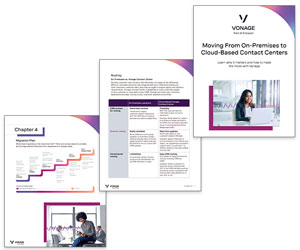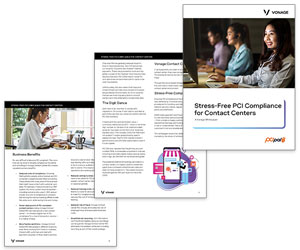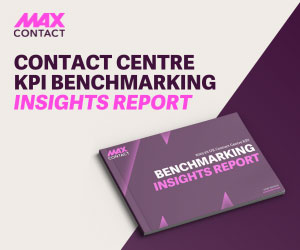Scott Rigdon at Vonage takes a look at cloud-based, internet-delivered telephone services and how they stack up against traditional, copper-wired, analog telephone services.
There was a time when every home had an analog phone – often mounted on a wall and usually with a coiled cord that stretched from room to room (and then never unstretched) – and every business used an analog phone line service. Today, digital is dominant, especially in the business environment.
What is an Analog Phone System?
At its most basic, analog phone line technology involves taking audio signals, usually the human voice, and converting them into electronic pulses that are transmitted over copper wires. The pulses are translated back into audio signals at the other end of the transmission.
Analog landline phone services, also known as POTS (Plain Old Telephone Service), have been around for decades and are fine for things like standard phones, faxes, and modems.
Analog phones connect to a location’s phone jack or into an on-site PBX (Private Branch Exchange) system that manages the routing of inbound and outbound calls.
But this technology has limitations on the amount of data that can be transmitted, and businesses today need to move a lot of data to enable employee collaboration and customer connections.
What is a Digital Phone Service?
The difference between analog and digital phones is that digital technology breaks your voice signal into binary code, a series of 1s and 0s. This code is sent to its destination, where another device reassembles all those numbers into the original signal.
Digital phone systems employ two transmission methods, voice over internet protocol (VoIP), which, as the name implies, sends your voice over the internet, and digital signals transmitted via cable or fiber optics.
Not All Digital Systems Are The Same
While VoIP is often referred to as a digital phone system, it’s important to understand that not all digital systems are technically VoIP.
Let’s break down the two major types of digital phone systems:
Digital (e.g., ISDN, Digital PBX)
Digital systems convert voice into binary signals (1s and 0s) but may still rely on on-premises equipment, like digital PBXs or ISDN lines.
These systems offer better clarity and more features than analog, but can be complex and costly to expand or maintain.
VoIP (Voice over Internet Protocol)
VoIP is a modern form of digital telephony that uses your internet connection to transmit voice.
It typically lives in the cloud and supports advanced features like unified communications, mobile apps, and integration with CRM tools. VoIP is cost-effective, scalable, and often the best fit for modern, distributed, or growing teams.
Think of VoIP as a more advanced, cloud-based evolution of traditional digital systems, optimized for flexibility, mobility, and business growth.
By understanding this distinction, it becomes clear why so many businesses are moving past analog and legacy digital systems in favour of VoIP-powered unified communications.
How Are Digital Systems Different From Analog Telephone Systems?
There are a number of factors that set analog and digital voice systems apart. Let’s take a quick look at the key digital phone vs. analog phone differences before we explore how they stack up in more detail.
| Analog Systems | Digital Systems |
|---|---|
| Equipment: On-premises hardware and analog phones connected to the local telephone service via “twisted pair” copper wires | Equipment: Digital phones or softphones, a router and modem, broadband internet |
| Costs: Can require large initial investment; business is responsible for maintenance and other ongoing costs | Costs: Involves less on-site equipment; updates are automatic |
| Reliability: Very reliable, susceptible to downed, cut, or degraded telephone wires | Reliability: Very reliable, requires strong, consistent internet, cable, or fiber optics |
| Features: Limited features, normally call hold, mute, and redial | Features: Dozens of features, especially in conjunction with unified communications |
Analog vs. Digital Phones: How They Stack Up (In More Detail)
1. Equipment
Business analog phone systems include on-premises wiring, handsets, and other equipment that are connected to the local telephone company via “twisted pair” copper wires.
There are two general points to remember with analog phone line systems: One assigned phone number is associated with each line, and that line can handle one conversation at a time.
In contrast, VoIP services use the broadband internet connection that most businesses already have on hand, while basic digital service transmits over cable or fiber optic technology.
VoIP is less expensive than analog or digital because data is sent over the existing internet infrastructure, which reduces the cost of installing new or separate phone lines.
VoIP requires less hardware and cables than traditional analog telephone systems, which translates into a less cluttered workplace and reduced implementation costs.
Additionally, a SIP phone, which is a type of VoIP phone, is specifically designed to work with VoIP services, allowing for even more streamlined and flexible communication options.
Some businesses opt for hybrid PBX systems that support both analog and digital/VoIP connections. You can also use analog telephone adapters (ATAs) to connect legacy analog hardware, like fax machines, to a VoIP system, reducing replacement costs.
2. Costs
In general, both VoIP and digital phone service are more cost-effective than a traditional analog phone line.
VoIP services cost less than digital phone service but require a high-speed broadband internet connection to work their best.
If you don’t have broadband Internet, digital phone service is more cost-effective than VoIP. Set-up costs can be a different story and depend on your current situation.
For example, if you have an on-premises analog phone system, there are costs you might face switching to VoIP, including buying digital phones or softphones, a router and modem (that you likely already have for your existing internet set-up), VoIP headsets, sufficient internet bandwidth, and a monthly provider subscription.
But you also avoid ongoing maintenance, updates, and other costs with VoIP that you do have with an on-premises system.
VoIP phone systems are relatively easy to install. And even if you have an existing analog phone line service in place, you can use VoIP adapters to enable service.
Landlines require physical connections and therefore need cable installations, digging up dirt, running cables through office buildings, etc.
This not only requires more installation time, but can also limit the number of active phone lines in your office depending on the number of cables and junctions involved.
And if you need a phone system in more than one location, e.g., at multiple storefronts or office sites, then analog phones require a physical connection at each location.
For VoIP and UCaaS services like Vonage offers, maintenance is often the provider’s responsibility. The software that VoIP phone systems use lives in the cloud, so there’s no need to pay for on-site hardware.
Long-distance or international calls are another area of potential cost savings. (This can vary on a case-by-case basis, check with phone service providers for details.)
In short, while analog systems may appear affordable up front, VoIP and digital systems often save more long-term thanks to reduced service and maintenance costs.
Cost Breakdown – Analog vs. Digital vs. VoIP
| Cost Factor | Analog Phone System | Digital Phone System | VoIP/UCaaS System |
|---|---|---|---|
| Initial Setup | Moderate to high | Moderate | Low to Moderate |
| Equipment Needed | On-premises PBX, handsets | Digital phones, adapters | Internet, softphones |
| Monthly Service Costs | Higher for long-distance | Moderate | Typically lower overall |
| Maintenance & Upgrades | On-site technician needed | May require vendor support | Mostly handled by provider |
| Expansion Costs | High (physical installation) | Medium | Low (virtual scaling) |
3. Reliability
When comparing analog phone vs. digital phone services, both are reliable when you consider call quality, analog is often described as having a richer tone, while digital offers superior clarity and less background noise, and performance.
The basic requirement of a phone is that when you pick it up, it works, and both analog and digital options check that box. The notion of reliability can be expressed as uptime, and the gold standard for uptime is 99.999%.
VoIP does have one disadvantage compared to analog landlines: It requires a strong internet connection and constant power supply.
If your business loses power or internet, it will hurt your ability to answer calls. But that can be mitigated if your VoIP provider gives you the ability to accept calls on a mobile device working with a hotspot, and if you have a back-up power supply.
In contrast, landlines don’t require either internet or power, although phone lines can be cut or downed due to a storm or other incident, which often takes longer to repair than a lost internet connection.
Ensuring VoIP Reliability in Real-World Conditions
VoIP systems are only as good as the infrastructure supporting them. Here are some ways to ensure consistent uptime and voice quality:
- Use business-grade internet with redundancy.
- Set up automatic failover to mobile devices during outages.
- Invest in backup power (e.g., uninterruptible power supplies).
- Enable QoS (Quality of Service) on routers to prioritize voice traffic.
VoIP providers like Vonage often include tools to help you monitor uptime, call quality, and system health, giving you more control than traditional analog systems.
4. Features
An analog phone will offer very basic features like mute, hold, and redial.
A digital solution expands on those features, adding call forwarding, call blocking, caller ID, three-way conversation capabilities, and more to the mix.
And combining VoIP with unified communications opens the door to even more features that boost productivity, collaboration, and customer engagement.
Unlocking More Than Just Voice
VoIP isn’t just about making calls, it’s a modern business communications platform.
Increase Efficiency and Decision-Making
Equip your team with tools that reduce manual tasks and improve service quality:
- AI-powered call routing and transcription
- Voicemail-to-email delivery
- Call recording for training and compliance
- Analytics dashboards to track performance and customer experience
Enhance Team Collaboration Anywhere
Empower remote and in-office teams to work seamlessly across devices:
- Mobile and desktop apps for unified access
- Team messaging and secure file sharing
- Integrated video meetings for real-time collaboration
Improve Customer Experience and Engagement
Deliver faster, more personalized service that drives loyalty:
- Virtual receptionists to greet and route callers
- Click-to-dial directly from your CRM or website
- Advanced call forwarding and presence awareness
These tools are not just bells and whistles, they increase response time, reduce customer wait times, and enable better decision-making.
Think of VoIP as the gateway to a full digital communications hub, ideal for scaling businesses focused on growth and responsiveness.
Considerations Based on Your Business Model
Different business types have unique communication needs. Here’s how analog, digital, and VoIP systems might align with various business models:
Small Retail Stores or Clinics
Analog systems can still work well for small businesses with minimal calling needs and a single location. Their reliability and simplicity make them a cost-effective option, especially where internet service is unstable.
Multi-Location Businesses (e.g., Franchise Chains)
Digital or VoIP systems provide the scalability needed to connect multiple branches under one unified system. Features like auto-attendant, virtual numbers, and call routing between locations are major time-savers.
Remote or Hybrid Teams
For distributed workforces, VoIP is essential. Features like mobile and desktop apps, video conferencing, voicemail-to-email, and call forwarding enable seamless communication no matter where employees are located.
VoIP Security & Compliance Considerations
What about VoIP security and compliance?
VoIP systems are digital, so securing them is critical, especially for businesses in regulated industries (like healthcare or finance).
What to look for:
- Encryption for calls and stored voicemails
- Multi-factor authentication (MFA) for admin logins
- Redundant servers and geo-redundancy
- HIPAA- or PCI-compliant offerings (depending on your industry)
Analog vs. Digital Phone Systems: Which is Right For Your Business?
The simple answer is, it depends. The best phone system is the one that best suits your needs, your current and future situation, your budget, and other factors. How many employees do you have? Are they on-site, remote, or hybrid? What kind of features are you looking for?
Generally, if you go with the right provider, VoIP and UCaaS offerings can be a smart choice. The number of businesses that use VoIP to power their communications is continuing to grow, with the market projected to reach $236.25 billion by 2028.
Plus, as more companies switch to remote and hybrid working, which is reported to increase productivity by upwards of 60%, VoIP and UCaaS platforms will become essential.
Vonage understands that communication with customers drives your success. That’s why we created an easy-to-use, easy-to-implement unified business communications solution that offers a wide range of collaboration and CX tools, plus the flexibility, mobility, and scalability you need.
This blog post has been re-published by kind permission of Vonage – View the Original Article
For more information about Vonage - visit the Vonage Website
Call Centre Helper is not responsible for the content of these guest blog posts. The opinions expressed in this article are those of the author, and do not necessarily reflect those of Call Centre Helper.
Author: Vonage
Reviewed by: Megan Jones
Published On: 23rd Sep 2025 - Last modified: 24th Sep 2025
Read more about - Guest Blogs, Vonage





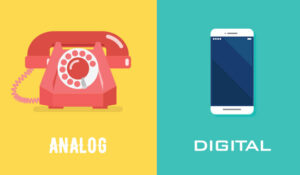
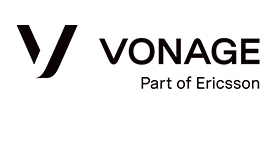 Vonage is redefining business communications, helping enterprises use fully-integrated unified communications, contact centre and programmable communications solutions via APIs.
Vonage is redefining business communications, helping enterprises use fully-integrated unified communications, contact centre and programmable communications solutions via APIs. 




